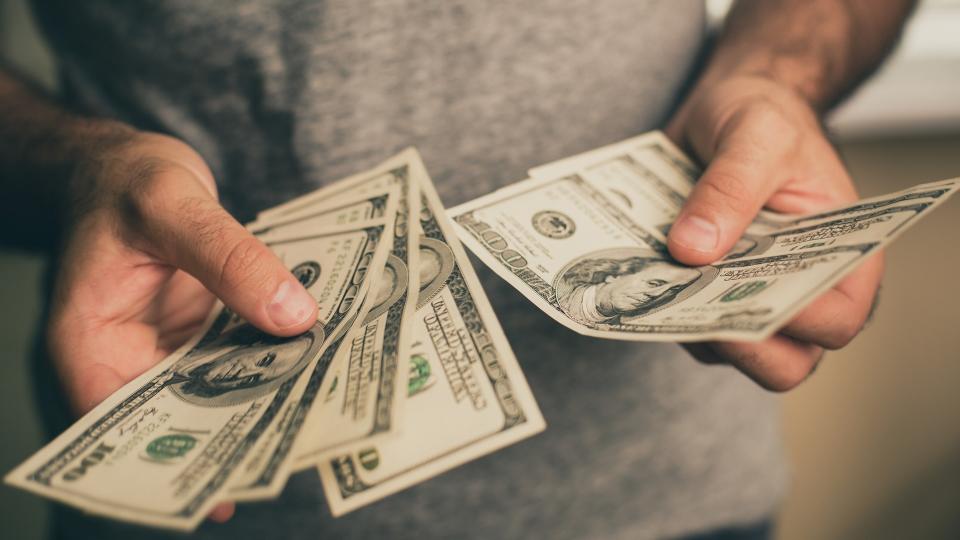How To Budget and Track Spending When Using Only Cash

Using a cash-only budgeting system can have some major advantages. For one, you watch what you spend very closely. It’s a lot easier to say “yes” to a big purchase when you’re swiping a card, but it’s not so easy when you have to dish out a pile of bills.
Read Next: Mark Cuban Reveals Why He Keeps a Strict Budget Everyday
Find Out: How To Get $340 Per Year in Cash Back on Gas and Other Things You Already Buy
That said, keeping track of things can be tricky. That’s why it’s essential to strategize. Below are some reasons strategizing is important, as well as some strategies to help you budget and track your spending when using only cash.
The Importance of Strategizing
“The best way to budget when using only cash is straightforward,” said Dayten Rynsburger, co-founder and chief revenue officer of Niche Capital. “You need to remember one thing: Just because it’s coins and nickels doesn’t mean it’s not money.
“Most people break 20-dollar bills and use cash, then just forget about the change. But the coins, nickels and dimes are where real budgeting comes in,” he said. “Once you make a purchase with a 10-, 20- or 50-dollar bill, you should have loose change. For your next purchase, you should provide the exact amount and keep this going.”
Dennis Shirshikov, head of growth at Summer, said utilizing cash for all transactions can simplify financial management by making the spending more tangible and immediate.
“However, it does require a disciplined approach to budgeting and tracking to ensure financial goals are met,” he said.
Learn More: I’m a Bank Teller: 3 Times You Should Never Ask for $50 Bills From the Bank
Use a Daily Spending Log
“Keeping a daily log of expenditures is crucial when using cash,” Shirshikov said. To do so, he said to consider maintaining a spending diary or ledger. “Each time you make a purchase, jot down the amount and purpose,” he explained. This habit not only tracks where the money goes but also encourages mindfulness about spending decisions.
“Many different apps and software are available to help you track your purchases,” Rynsburger added. “After every purchase, you should input the amount spent into a budget app or spreadsheet on your phone.”
He said this will keep a constant sum of your total purchases. “With this knowledge, you can manage your budget so you don’t exceed it,” Rynsburger explained.
Rhett Stubbendeck, CPCU, CEO and founder of Leverage Planning, said keeping a daily spending diary is also something he finds invaluable.
“Each day note down what you spend your cash on. This isn’t just about tracking but about understanding your spending patterns, which can reveal a lot about where your money goes,” he said. “Even in a cash-based system, technology can assist. You can use apps to snap pictures of receipts or track broader financial goals, integrating old-school methods with new-school tech.”
Employ an Envelope Budgeting System
The envelope budgeting system is a traditional method where you divide cash into envelopes according to your budget categories — groceries, entertainment, transportation, etc.
“Each envelope gets a predetermined amount of cash that corresponds to your budget for that category,” Shirshikov said. “Once an envelope is empty, you cease spending in that category until the next budget cycle.”
He said this physical partition of cash helps prevent overspending and provides a clear visual of where your money goes.
Stubbendeck also advocated using this method. “One effective strategy I recommend is the envelope system. It’s quite simple. All you have to do is allocate cash for different spending categories like groceries, entertainment and travel into separate envelopes. This method visually limits your spending to what’s in each envelope, helping prevent any overspending,” he said.
Look Up the Price Before You Buy
Whether you are buying lunch, necessities or something else, Rynsburger said to add up the cost of your goods and services on your phone calculator.
“Add in the sales tax percentage of your state, and make sure you’re not exceeding the budget you’ve been keeping track of. This is very important, as it only takes 5 minutes,” he said.
Set Up Regular Reviews
Another strategy you can employ is setting up regular reviews of your spending.
“Set a weekly or biweekly schedule to review your cash spending against your budget goals,” Shirshikov said. “This frequent check-in allows you to adjust your habits before they lead to significant financial discrepancies.”
Utilize Low-Tech Tools for Assistance
For those who prefer a bit more structure, Shirshikov recommended low-tech tools, like a budget binder or a simple spreadsheet, which can be very effective.
“These tools help consolidate your financial information in one place, making it easier to review and adjust as needed,” he said.
Create a Receipt Management System
“It is essential to save every paper receipt as a cash-only user,” said Nischay Rawal, CPA, founder of NR Tax & Consulting.
“We’ve encouraged the use of a dated receipt holder, organizing receipts by type and date, which simplifies retrieval for both budgeting reviews and tax purposes,” Rawal explained. “Weekly, these receipts are assessed against the cash logs to ensure accuracy and help identify any trends or anomalies in spending, promoting a stricter adherence to allocated budgets and providing insightful data for future planning.”
This method can help you organize your financial records and fortify them against potential audits or financial discrepancies, Rawal said.
More From GOBankingRates
Don't Buy a House in These 3 Cities Facing a 'Climate Change Real Estate Bubble'
This is One of the Best Ways to Boost Your Retirement Savings in 2024
Here's How to Add $200 to Your Wallet -- Just For Banking Like You Normally Would
This article originally appeared on GOBankingRates.com: How To Budget and Track Spending When Using Only Cash